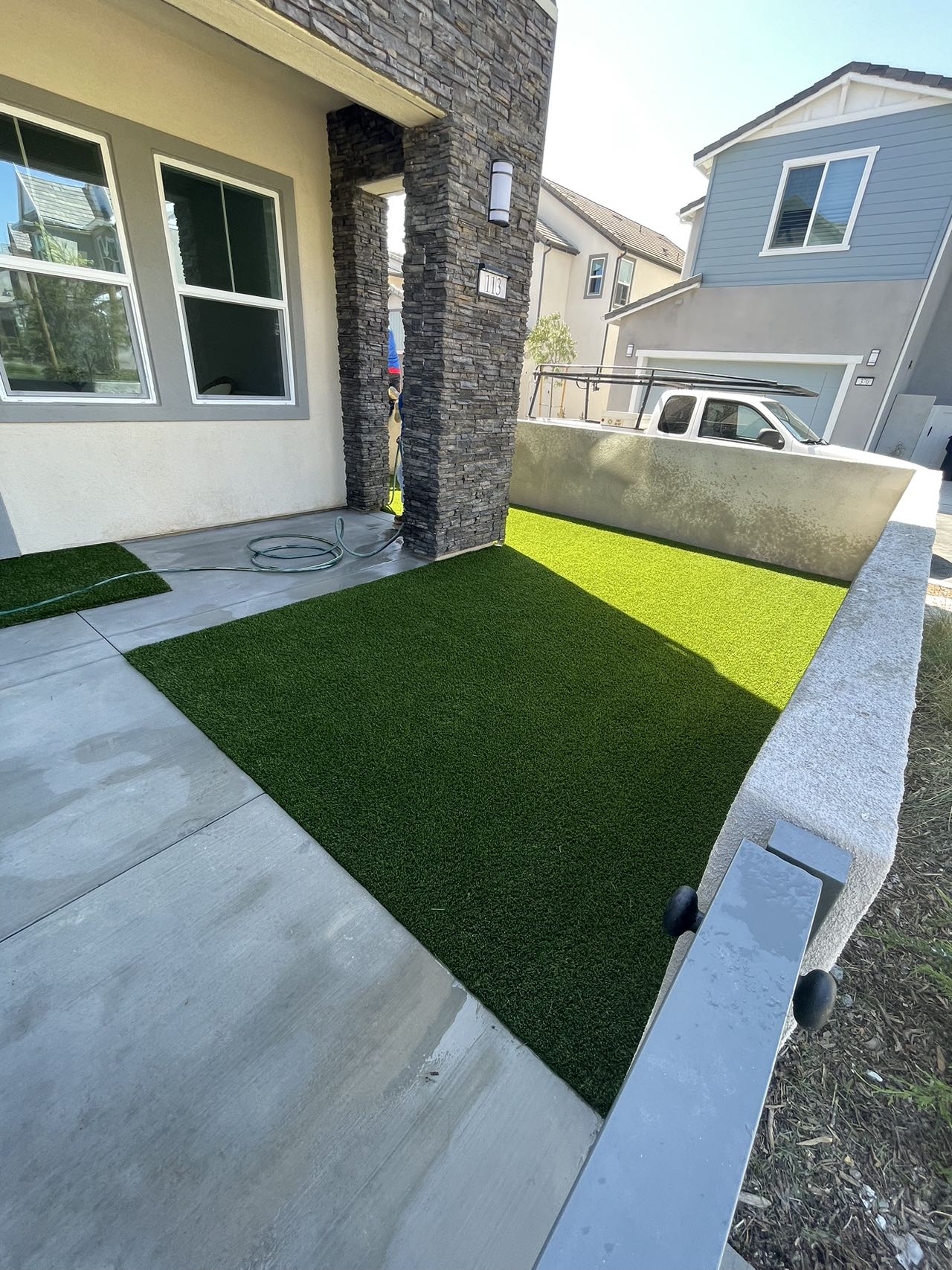California's beautiful landscapes and pleasant climate make it an ideal destination for golf enthusiasts. However, golfers often face a common challenge: how to continuously improve their golf skills within limited time constraints? One of the answers lies in constructing a golf putting practice area at home, commonly known as a "putting green." In California, artificial turf has become a popular choice for creating these golf putting practice areas. This article will explore the various advantages of using artificial turf for putting greens in California and the current trends in its promotion and application.

Advantages of Artificial Turf for Golf Putting Greens
Choosing artificial turf for constructing golf putting greens offers several advantages, which are particularly appealing to golf enthusiasts in California.
1.1 Low Maintenance Costs
California's climate varies from droughts to heavy rains, making the maintenance of natural grass lawns a costly endeavor. Artificial turf, on the other hand, requires minimal water and no regular mowing. This significantly reduces maintenance costs and ensures a lush green surface even during drought conditions.

1.2 Durability
Artificial turf is typically made from high-quality synthetic fibers that exhibit outstanding durability. It can withstand wear and tear, whether it's sunny or rainy, allowing golfers to practice in almost any weather condition.
1.3 Customization
Constructing golf putting greens with artificial turf allows for customization to match individual preferences. The shape of the green, placement of putting holes, and addition of obstacles can all be tailored to a golfer's needs, providing an optimal training experience. This flexibility is crucial for improving golf skills.

1.4 Environmental Friendliness
Artificial turf is often made from recyclable materials and generates fewer carbon emissions over its lifecycle compared to natural grass. When compared to natural grass lawns, artificial turf has a smaller environmental footprint, contributing to the preservation of California's precious natural resources.
Promotion and Application of Artificial Turf in California
In California, the promotion and application of artificial turf, especially for golf putting greens, continue to rise. Here are examples of how artificial turf is being used in California:
2.1 Golf Clubs
Many golf clubs incorporate artificial turf on their practice greens to provide golfers with superior putting practice conditions. These artificial turf greens can simulate real golf course conditions, enabling players to practice in an environment that closely resembles actual gameplay.
2.2 Private Residences
An increasing number of California residents are constructing golf putting practice areas in their own backyards, with artificial turf being their preferred choice. These private putting greens can be customized according to individual preferences and space availability, offering golfers convenient practice opportunities.
2.3 Schools and Universities
Schools and universities are also using artificial turf to construct golf putting practice areas, providing students with better sports training facilities. This not only helps cultivate the next generation of golfers but also offers additional recreational options for students.
2.4 Commercial Use
Some commercial venues, such as golf training schools and entertainment centers, are incorporating artificial turf in their facilities. These venues often feature professionally designed putting practice areas, attracting players of all skill levels for practice and recreation.
Future Prospects of Artificial Turf
With the increasing adoption of artificial turf for golf putting greens in California, its future prospects appear promising. Several factors may influence its development in the years to come:
3.1 Technological Advancements
As technology continues to advance, the quality and performance of artificial turf are likely to improve. Future artificial turf may become even more realistic, offering better ball speed and bounce, thus providing a practice experience closer to real golf course conditions.
3.2 Sustainability Considerations
In light of climate change and sustainability concerns, future artificial turf may place a greater emphasis on environmental friendliness. New types of artificial turf made from recyclable materials and with reduced carbon footprints could become a trend in the future.
3.3 Education and Training
Educational and training institutions may continue to promote artificial turf to nurture more golf talent. This could boost the popularity of golf in California and provide more opportunities for young people to engage in sports.
In California, artificial turf has become a popular choice for constructing golf putting greens due to its low maintenance costs, durability, customization options, and environmental benefits. Whether at golf clubs, private residences, schools, or commercial venues, artificial turf is widely utilized. In the future, with ongoing technological advancements and increased focus on sustainability, artificial turf is likely to continue playing a vital role in golf putting practice areas in California, offering golfers improved practice and recreational opportunities.
